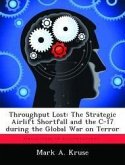The United States has emerged as the sole superpower. Recognizing the dramatic change in the international environment, the U.S. has adopted a national security strategy of engagement. As such, the U.S. relies on the civilian and military strategic airlift assets of the National Airlift Fleet to influence world events. However, due to changed force structures, cut-backs, and dwindling resources, the U.S. does not possess enough airlift assets to accomplish national goals and objectives. Hence, this paper asks, "In order to meet current and future airlift requirements of the United States, does the Air Force need to procure and field a commercial off-the-shelf (COTS) cargo aircraft?" The post Cold War strategic environment and the National Security Strategy of engagement dramatically increased the nation's commitments around the world, thus requiring reevaluation of the National Airlift Policy. The United States military currently does not posses the strategic airlift capability required by the Unified Command Plans. The procurement of 120 C-17s to replace 266 rapidly aging C-141s adds increased capability, due to the C-17's ability to carry outsized cargo and operate in and out of small austere locations, but at reduced flexibility due to the reduced number of airframes available to the National Command Authority. Furthermore, the proliferation of weapons of mass destruction dramatically increases the likelihood operating in "hostile" environments, thereby, eliminating the civil reserve airfleet's contribution to strategic airlift. However, commercial airlift aircraft, built for efficiency, represent a fiscally responsible complement to the military's airlift fleet. Therefore, in order to meet current and future force requirements, especially with a continental based force structure, the United States needs to supplement its strategic airlift fleet with a commercial off-the-shelf airlift aircraft.
Hinweis: Dieser Artikel kann nur an eine deutsche Lieferadresse ausgeliefert werden.
Hinweis: Dieser Artikel kann nur an eine deutsche Lieferadresse ausgeliefert werden.








